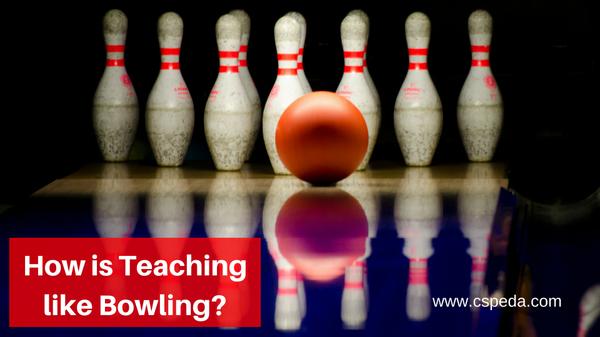How Is Teaching Like Bowling?
Watch the full BlogCast Video here:For Listening on the go to audio of this blog post:Do you remember the sights, sounds, and smells of bowling alleys? You can usually see all ages and ability levels having fun together. You might see some younger children using the ramp to help them bowl, or the bumpers to prevent the frustration of gutter balls.
The bowling alley is a naturally loud place, the balls dropping and rolling on the slick wooden floor, friends cheering each other on, lots of laughs and probably clinging of beer bottles.
Do we dare talk about the smells of the bowling alley – no let’s not go there…
Shelley Moore, a university professor and education consultant came up with a wonderful metaphor of teaching being like bowling –
The teacher is the bowling ball, and all the students are the pins.
Teaching and bowling both take skills and require practice. The good news is we get more than one chance.
Sometimes teachers’ lessons are a strike and everyone wins.
There are other days when a teacher only reaches a few students and many pins are left standing who they can’t get to. Usually these are the students that need the most support and the students that need to be challenged.
Many teachers have learned to teach to the “middle of the class”, that so-called average student. Novice bowlers think if they can throw the ball down the middle of the lane they will have the best chance of getting the most pins down. But what often happens is that dreaded 7–10 split.
Maybe we can learn something from professional bowlers. Shelley Moore actually went out and talked with professional bowlers and discovered they know aiming for the middle is a poor strategy to use. Instead, they throw the ball with a curve down the lane in order to have the ball make initial contact to the most pins. They aim for the outside pins the pins that are the hardest to hit.
Many teachers are taught to aim for the head pin, the easiest one to reach. They may have not been taught to aim for the challenging pins – the kids with disabilities, students who speak a different language, children that go to bed hungry and wake up tired and hungry.
We need to understand that the supports we plan for the students that have the disability labels and others whom have been marginalized are the supports that many other students in the class will benefit from.
What if teachers planned their lessons to make sure they would reach the students that are often seen as the “hardest” to reach? Sometimes we forget that these students are also ones that we can learn so much from. And what teachers find out is that if their lessons reach the students that having challenging educational needs, they will also be successful with every other student in their class.
Let’s have bowling helps us change education!
Take care,
|
|
The author of this blog post is a non-attorney, advocate. Therefore, the contents of the blog post, in its entirety, should not be construed as legal advice, but, rather the opinion of the author.
|

